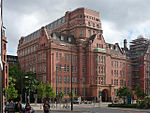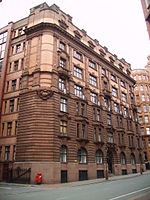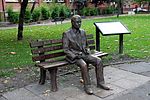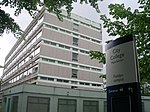Department of Mechanical, Aerospace and Civil Engineering, University of Manchester
Departments of the University of ManchesterEngineering universities and colleges in the United KingdomMechanical engineering schoolsNuclear technology in the United KingdomVague or ambiguous time from November 2018
The Department of Mechanical, Aerospace & Civil Engineering (or "MACE") at the University of Manchester was formed from three departments in the 2004 merger between the Victoria University of Manchester (VUM) and the University of Manchester Institute of Science and Technology (UMIST). The merged departments were the Department of Civil and Construction Engineering which was joint between both universities, the Department of Mechanical Aerospace and Manufacturing Engineering at UMIST and the Manchester School of Engineering at VUM.
Excerpt from the Wikipedia article Department of Mechanical, Aerospace and Civil Engineering, University of Manchester (License: CC BY-SA 3.0, Authors).Department of Mechanical, Aerospace and Civil Engineering, University of Manchester
Sackville Street, Manchester City Centre
Geographical coordinates (GPS) Address Nearby Places Show on map
Geographical coordinates (GPS)
| Latitude | Longitude |
|---|---|
| N 53.473352777778 ° | E -2.2351805555556 ° |
Address
George Begg Building
Sackville Street
M1 7EG Manchester, City Centre
England, United Kingdom
Open on Google Maps











